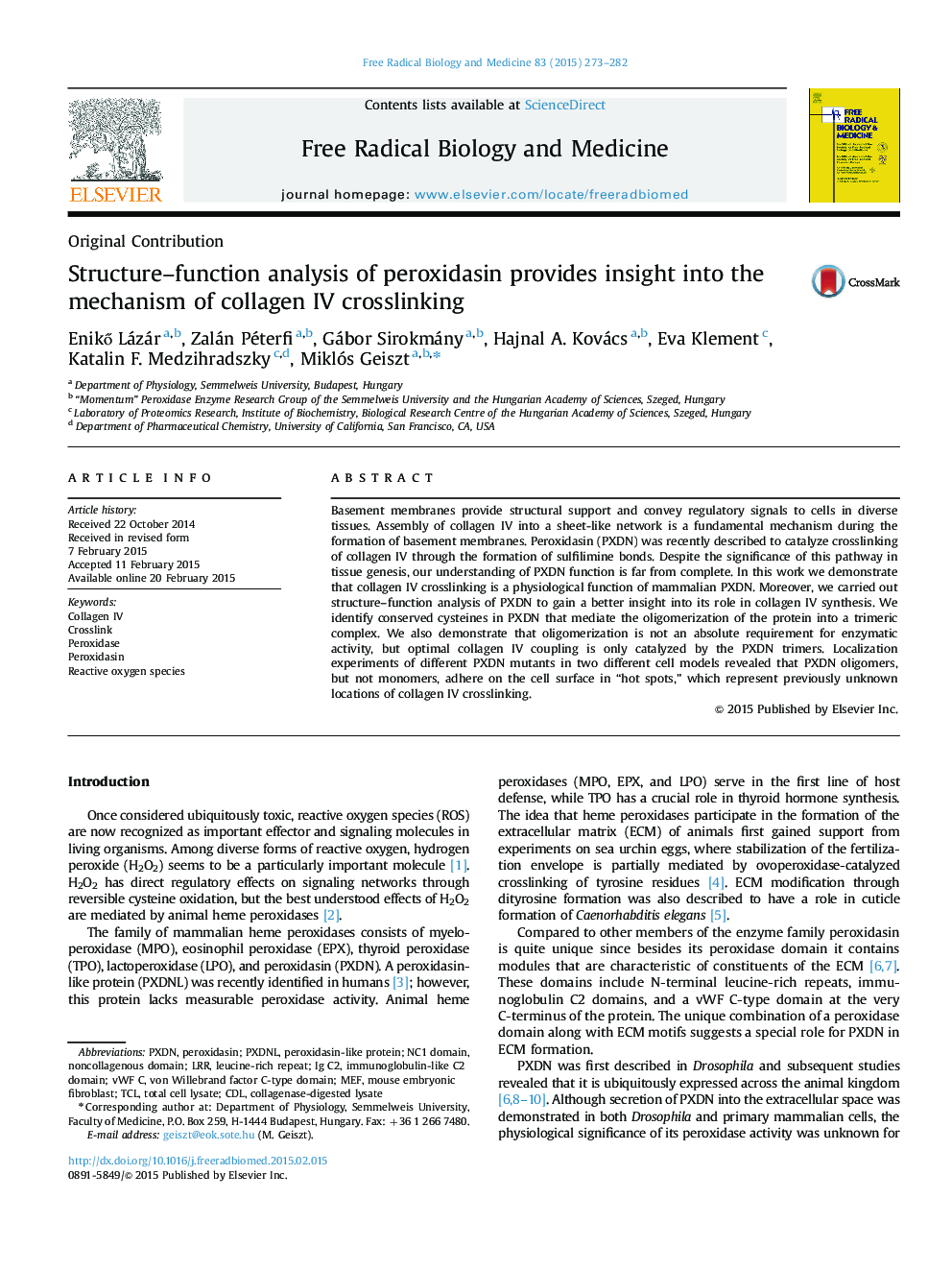| Article ID | Journal | Published Year | Pages | File Type |
|---|---|---|---|---|
| 1907973 | Free Radical Biology and Medicine | 2015 | 10 Pages |
•Mammalian PXDN is essential for the crosslinking of collagen IV protomers in the ECM.•PXDN exists as homotrimers stabilized by conserved intermolecular disulphide bridges.•Optimal collagen IV crosslinking requires the oligomerization of PXDN.•Trimeric but not monomeric PXDN attaches to the cell surface following secretion.•PXDN “hot spots” on cell surface might represent main sites of collagen IV crosslinking.
Basement membranes provide structural support and convey regulatory signals to cells in diverse tissues. Assembly of collagen IV into a sheet-like network is a fundamental mechanism during the formation of basement membranes. Peroxidasin (PXDN) was recently described to catalyze crosslinking of collagen IV through the formation of sulfilimine bonds. Despite the significance of this pathway in tissue genesis, our understanding of PXDN function is far from complete. In this work we demonstrate that collagen IV crosslinking is a physiological function of mammalian PXDN. Moreover, we carried out structure–function analysis of PXDN to gain a better insight into its role in collagen IV synthesis. We identify conserved cysteines in PXDN that mediate the oligomerization of the protein into a trimeric complex. We also demonstrate that oligomerization is not an absolute requirement for enzymatic activity, but optimal collagen IV coupling is only catalyzed by the PXDN trimers. Localization experiments of different PXDN mutants in two different cell models revealed that PXDN oligomers, but not monomers, adhere on the cell surface in “hot spots,” which represent previously unknown locations of collagen IV crosslinking.
Graphical abstractFigure optionsDownload full-size imageDownload high-quality image (150 K)Download as PowerPoint slide
